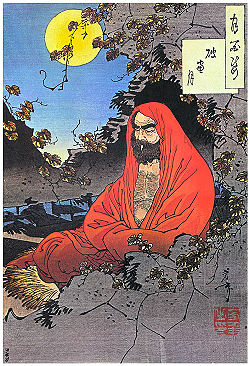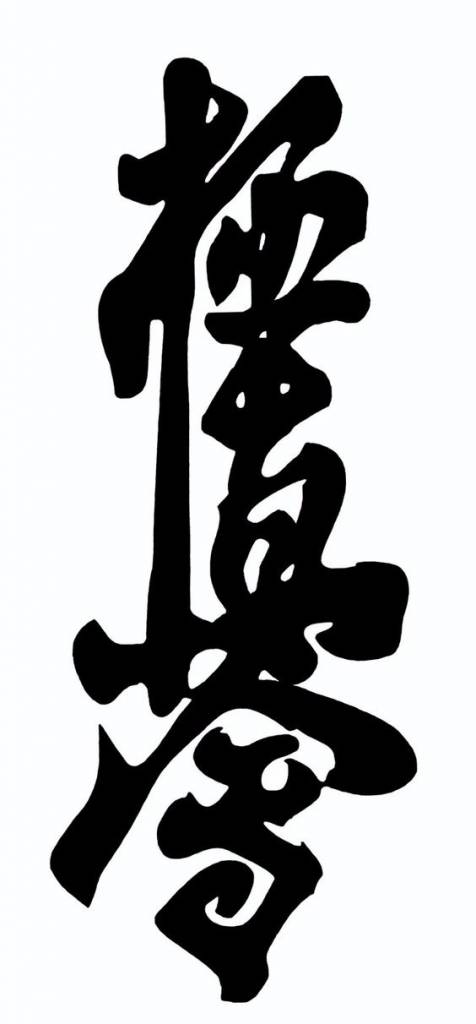BODHIDHARMA

There are no verifiable written records of Bodhidharma’s life. Much of what is known has been passed down through folklore. However, circumstantial evidence suggests he was a real historical figure, probably was a member of an Indian royal family, and most likely did have some influence on the early development of Chinese martial arts. The generally accepted story goes something like this……
Bodhidharma was born into a privileged life as a member of the royal family in Southern India in (or about) 482 A.D. During his formal education as a prince, he encountered the Buddha’s teachings in the form of the Four Noble Truths and Eightfold Path of Hinduism:
The Four Noble Truths are:
- Life is full of pain and suffering;
- Suffering is caused by greed;
- Suffering can be ended if greed is ended; and
- To end greed, people must follow eight basic principles, called the Eightfold Path.
The Eightfold Path is a set of instructions on the proper way to live:
- Try to know truth;
- Resist evil;
- Refrain from hurting others;
- Respect life, property, and morality;
- Work without hurting others;
- Free the mind from evil thoughts;
- Stay in control of one’s feelings and thoughts; and
- Focus and sharpen the mind through meditation,
He decided to abandon his royal position, forfeit his inheritance, and study with the Hindu teacher Prajnatara. At the time, Buddhism was present in China but was not flourishing, so Prajnatara sent Bodhidharma to teach the Chinese people how to achieve spiritual release from the materialistic world through discipline and meditation. Upon hearing of Bodhidharma’s arrival, the Chinese emperor Wu Ti, also a student of Buddhism, summoned Bodhidharma to the palace. Unfortunately, the meeting did not go well. The emperor did not see the merits of Bodhidharma’s teachings and would not support his efforts to teach the Chinese people. So Bodhidharma set out on a journey of discovery, crossing the Te River and Sung Mountain range until he reached the Shaolin Temple founded by the Buddha. He took up residence in a nearby cave and meditated there for nine years.
Upon seeing the terrible physical condition of the monks of the Shaolin Temple, he was overcome with pity. The monks had devoted themselves to meditation, but in doing so had neglected their physical health, and had become lethargic in their manner. He set out to teach the monks how the mind, body and spirit are joined and all must be nourished, otherwise Nirvana (release from earthly bondage) can never be achieved. Bodhidharma taught that, after the physical body was pushed beyond its limits, the mind would begin to take over, and help the body endure, thereby expanding both one’s physical and mental strength. The mind and body could then properly apply themselves to spiritual enrichment through long periods of mediation. As a result of this training, the Shaolin monks became incredibly strong and infamous for their ability to maintain focus almost indefinitely.
The stories of Bodhidharma teaching the monks physical exercises so they could defend themselves from bandits and warlords is considered valid, but secondary to his spiritual objectives. In fact, Bodhidharma is credited with saying “one who engages in combat has already lost the battle.” Nonetheless, the exercises evolved as dual-purpose and eventually became Kung Fu. Interestingly, in its original interpretation, “Kung Fu” can mean mastery of any skill or discipline requiring hard work and practice, not necessarily just fighting. It is sometimes interpreted as “achievement” or “merit.”
Bodhidharma’s “18 dynamic tension exercises” eventually found their way into print in 550 A.D. and later became known as “18 Hands of Lo Han”, which form the basis of Chinese Boxing, or Chuan-Fa. Many masters of modern karate traveled to China to learn Chuan-Fa, which they later adapted into other martial arts. In Kyokushin lineage, we can trace back to Kanryo Higaonna from Naha, who studied Chuan Fa (and other derivations) in China. Higaonna returned to Naha and later taught Chojun Miyagi, who founded Goju Ryu, which, along with Shotokan, forms the basis of Kyokushin.


